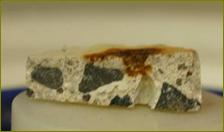Chemical Sciences
Mission
The Agent Chemistry Branch supports detection, protection, toxicology, and decontamination business areas by synthesizing, purifying, and determining physical and chemical properties of classical and reputed CW agents
Capabilities
- Synthesis and purification of CW agents
- Physical properties of toxic chemicals
- Demilitarization of CW agents
- Chemical Analysis
Mission
The Chemical Analysis & Physical Properties Branch specializes in the development of improved analytical methods for accurate characterization and quantitation of agent and agent-related compounds in complex matrices.
Capabilities
- Comprehensive instrumentation and expertise in the following areas of chemical analysis:
- gas chromatography
- liquid chromatography
- capillary electrophoresis,
- thermal desorption
- solid phase extraction
- single and tandem mass spectrometry,
- infrared spectroscopy, atomic emission detection,
- nuclear magnetic resonance spectrometry,
- novel ionization/detection techniques (DART)
- Integration of analytical techniques with physical chemical knowledge to comprehensively identify chemical agents, their degradation products and complete unknowns.
- Environmental chambers, wind tunnels and optical imaging equipment for comprehensive characterization of agent/substrate interactions.

Mission
The Forensic Analytical Branch provides the sampling and analysis support required by the Army, Department of Defense, and other Government Agencies related to the detection and identification of chemical warfare related materials in all types of matrices. All sampling and analysis work is performed in accordance with an ISO certified quality system. The team is specifically named in DoD planning guidance as the source of sampling and analysis support to demonstrate DoD compliance with the Chemical Weapons Convention (CWC). The team also provides training and expert consultation services.
Capabilities
Collection and analysis of samples for the presence of chemical warfare related materials, to include toxins.
On-site and laboratory analysis using techniques such as gas chromatography, liquid chromatography, mass spectrometry, flame photometric detector, time-of-flight mass spectrometry, atomic emission detector, nuclear magnetic resonance, and various types of infrared spectrometry.
Analyses on trace level, pure materials, or any concentration between these extremes.
